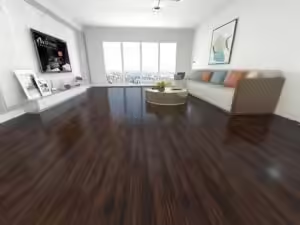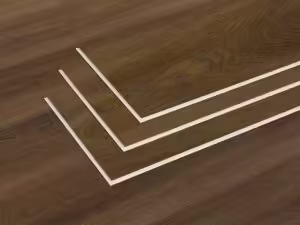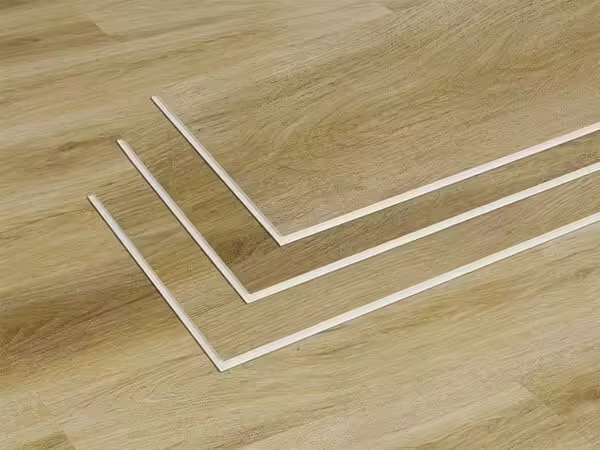Welcome to My Blog! 🌟
Before we dive into the content, let’s stay connected! Join me on my social media platforms where I share exclusive insights, engage with our amazing community, and post regular updates. Here’s how you can connect with me:
📘 Facebook: Follow Me on Facebook
Now, let’s embark on this journey together. I hope you find the content here insightful, engaging, and most importantly, valuable. Let’s explore, learn, and grow together! 🚀
Feel free to share your thoughts and feedback in the comments or on my social media—I’d love to hear from you! 😊
Table of Contents
Introduction


When selecting modern flooring solutions, homeowners and designers often face a critical choice between SPC (Stone Plastic Composite) and WPC (Wood Plastic Composite) materials. Both belong to the luxury vinyl plank (LVP) or luxury vinyl tile (LVT) category, but their compositions and performance characteristics differ significantly. Understanding the key factors that distinguish SPC vs WPC is essential for making an informed decision that aligns with functional needs, aesthetic preferences, and budget constraints. This guide explores four pivotal factors—durability, water resistance, installation complexity, and cost—to help you navigate the SPC vs WPC debate and choose the right flooring for your space.
NO 1. Durability: Comparing SPC and WPC Flooring Resilience
Durability is a primary consideration in flooring selection, as it directly impacts lifespan, maintenance requirements, and long-term performance when evaluating SPC vs WPC flooring. These two popular vinyl flooring types differ in their structural composition, leading to distinct durability profiles that cater to different needs.
SPC Flooring: The Rigid Core Advantage
SPC flooring features a rigid core layer made from a blend of calcium carbonate and PVC, which provides exceptional dimensional stability and impact resistance—key factors in the SPC vs WPC durability debate. This core structure:
- Withstands Heavy Traffic: SPC floors excel in high-traffic areas like living rooms, hallways, and commercial spaces. Their rigid core minimizes denting from furniture or foot traffic, with tests showing they can withstand up to 3,000 psi of pressure without permanent damage—outperforming many WPC alternatives.
- Resists Thermal Expansion: The calcium carbonate content in SPC reduces its thermal expansion rate to 0.05 mm/m/°C, making it less susceptible to warping in environments with temperature fluctuations. This stability gives SPC an edge in SPC vs WPC comparisons for areas with extreme temperature changes.
- Abrasion Resistance: SPC floors typically have a wear layer of 12–20 mils, which resists scratches from pet claws or moving appliances. Third-party tests show SPC floors maintain surface integrity after 50,000 cycles of abrasion testing.
WPC Flooring: Flexibility Meets Durability
WPC flooring incorporates a core made from a mix of wood fibers, plastic, and foaming agents, creating a more flexible structure:
- Shock Absorption: The wood-plastic core of WPC floors offers better cushioning underfoot, making them comfortable for spaces like bedrooms or playrooms. They reduce impact noise by 20–30% compared to SPC, appealing to those prioritizing acoustic performance in SPC vs WPC choices.
- Moderate Traffic Suitability: WPC floors are suitable for residential use but may dent more easily under heavy furniture. A 2023 study found that WPC floors subjected to 2,000 psi of pressure showed minor indentation, whereas SPC floors remained unaffected—highlighting a key durability disparity in SPC vs WPC analyses.
- Moisture Impact on Durability: While WPC is more water-resistant than traditional wood floors, its wood fiber content makes it slightly more prone to swelling if exposed to prolonged moisture. Proper sealing is crucial to maintain durability in humid areas, a consideration that sets it apart in SPC vs WPC comparisons for bathroom or kitchen installations.
Durability Comparison: SPC vs WPC
| Durability Aspect | SPC Flooring | WPC Flooring |
|---|---|---|
| Core Structure | Rigid calcium carbonate + PVC | Flexible wood fiber + plastic + foam |
| Traffic Resistance | Excellent for heavy commercial use | Suitable for moderate residential use |
| Dent Resistance (PSI) | Withstands >3,000 psi | Withstands ~2,000 psi |
| Thermal Expansion Rate | 0.05 mm/m/°C | 0.10 mm/m/°C |
| Wear Layer Thickness | 12–20 mils | 8–15 mils |
NO 2. Water Resistance: SPC and WPC in Moisture-Prone Environments


Water resistance is critical for floors in kitchens, bathrooms, or basements, and the debate between SPC vs WPC hinges on their performance in wet conditions. Both offer better water resistance than natural wood, but their capabilities vary significantly when exposed to moisture.
SPC Flooring: Waterproof by Design
SPC’s all-plastic composition makes it inherently waterproof, a key advantage in SPC vs WPC comparisons for humid spaces:
- Suitable for Wet Areas: SPC floors can be installed in bathrooms, laundry rooms, or below-grade basements without risk of water damage. Tests show no swelling or warping after 72 hours of submersion, reinforcing its superiority in SPC vs WPC evaluations for wet environments.
- Seamless Waterproofing: Most SPC floors use click-lock systems that create a tight seal between planks, preventing water infiltration. Adding a moisture barrier underlayment further enhances protection, making it a go-to choice in SPC vs WPC discussions for waterproof needs.
- Mildew and Mold Resistance: The lack of organic materials in SPC reduces mildew growth. Independent tests found zero mold proliferation after 30 days in humid conditions, a feature that sets SPC apart in SPC vs WPC analyses for hygiene-sensitive areas.
WPC Flooring: Water-Resistant but Not Waterproof
WPC’s wood fiber core requires careful moisture management, highlighting key distinctions in SPC vs WPC performance:
- Limited Water Exposure: WPC floors are water-resistant but not fully waterproof, suitable for spills and humidity but not standing water. Prolonged exposure may swell wood fibers, causing warping—an important consideration in SPC vs WPC debates for kitchen or bathroom installs.
- Sealing Requirements: WPC benefits from periodic edge sealing in high-moisture areas. A 2022 case study showed unsealed WPC floors in bathrooms experienced 15% edge swelling within six months, underscoring the need for maintenance not required in SPC vs WPC comparisons.
- Vapor Barrier Necessity: Installing WPC in basements requires a vapor barrier underlayment to prevent subfloor moisture from affecting the core. Neglecting this reduces WPC lifespan by 40%, a drawback absent in SPC vs WPC evaluations of basement flooring options.
Water Resistance Key Points
- SPC : Ideal for bathrooms, kitchens, and basements; no risk of water damage.
- WPC : Suitable for moderate moisture areas like kitchens with proper sealing; avoid submersion.
NO 3. Installation Complexity: SPC vs WPC for DIY and Professionals
Installation ease affects cost and timeline, a critical factor when choosing between SPC vs WPC. Their structural differences lead to distinct installation requirements.
SPC Flooring: Rigid Core, Straightforward Installation
SPC’s rigid structure simplifies installation:
- Click-Lock Systems: Most SPC floors use 5G or Uniclic click-lock mechanisms that allow planks to be snapped together without adhesive. This reduces installation time by 30% compared to glue-down floors.
- Subfloor Requirements: SPC requires a flat, clean subfloor (within 3/16″ per 10 feet) but can be installed over concrete, plywood, or existing floors. Self-leveling compounds can correct minor imperfections.
- DIY-Friendly: Due to its straightforward locking system and minimal expansion, SPC is suitable for DIY installers. A 100 sq ft room can be completed by a novice in 4–5 hours.
WPC Flooring: Flexible Core, Nuanced Installation
WPC’s flexibility requires more attention to detail:
- Expansion Gaps: WPC floors need wider expansion gaps (1/4″ around perimeter) to accommodate thermal movement, especially in areas with temperature variations.
- Subfloor Preparation: WPC is more sensitive to subfloor imperfections and may require a smoother surface (within 1/8″ per 10 feet). Uneven subfloors can cause WPC planks to flex and create squeaks.
- Underlayment Needs: WPC often benefits from a padded underlayment to enhance comfort and reduce noise, adding to installation steps. This underlayment must also include a moisture barrier for humid environments.
Installation Comparison
| Installation Aspect | SPC Flooring | WPC Flooring |
|---|---|---|
| Locking System | Click-lock (5G, Uniclic) | Click-lock or glue-down |
| Subfloor Flatness Requirement | 3/16″ per 10 feet | 1/8″ per 10 feet |
| Expansion Gap Needed | 1/8″ around perimeter | 1/4″ around perimeter |
| DIY Suitability | High (novice-friendly) | Moderate (requires attention to gaps) |
| Average Installation Time | 4–5 hours for 100 sq ft | 6–8 hours for 100 sq ft |
NO 4. Cost Analysis: SPC vs WPC for Different Budgets


Cost is a deciding factor for many buyers, with SPC and WPC offering different price points and value propositions.
SPC Flooring: Higher Initial Cost, Lower Long-Term Expenses
SPC floors typically have a higher upfront cost but save money over time:
- Material Price: SPC ranges from $3–$7 per sq ft, depending on wear layer thickness and design. Premium SPC with 20 mil wear layers and realistic wood visuals can cost $5–$7 per sq ft.
- Installation Costs: Due to its DIY-friendly nature, SPC can save on labor costs. Professional installation averages $2–$4 per sq ft, bringing total costs to $5–$11 per sq ft.
- Long-Term Value: SPC’s durability reduces replacement needs, with an expected lifespan of 20–30 years. This translates to a cost per year of $0.17–$0.35 per sq ft.
WPC Flooring: Lower Initial Cost, Moderate Long-Term Expenses
WPC offers a more budget-friendly entry point but may require more maintenance:
- Material Price: WPC costs $2–$5 per sq ft, making it 20–30% cheaper than SPC. Basic WPC models start at $2–$3 per sq ft, while higher-quality options with thicker wear layers cost $4–$5.
- Installation Costs: WPC installation is similar to SPC, at $2–$4 per sq ft, bringing total costs to $4–$9 per sq ft.
- Long-Term Value: WPC’s lifespan is 15–25 years, with a cost per year of $0.16–$0.33 per sq ft. However, potential moisture damage or wear may increase maintenance costs over time.
Cost Summary
- SPC : Higher upfront cost but longer lifespan and lower maintenance, ideal for long-term homeowners.
- WPC : Cheaper initial investment suitable for budget projects or short-term stays.
FAQ
Q: Can SPC and WPC floors be installed over radiant heating?
A: Yes, both can be installed over radiant heating systems. SPC’s low thermal expansion makes it slightly more suitable, but WPC can be used with proper gap planning and temperature controls (max 85°F).
Q: How do SPC and WPC compare in terms of eco-friendliness?
A: WPC contains wood fibers, a renewable resource, but both use PVC. SPC has a higher calcium carbonate content, which is a natural mineral. Look for brands with recycled content or low-VOC certifications for greener options.
Q: Which is better for homes with pets and children?
A: SPC is preferable due to its superior scratch and dent resistance. Its waterproof nature also makes spills easier to clean. WPC can work but requires more vigilance to prevent scratches and moisture damage.
Q: Can SPC or WPC be refinished like hardwood floors?
A: No, both have a wear layer that cannot be sanded or refinished. Once the wear layer is worn through, the floor must be replaced. SPC’s thicker wear layer extends its usable life.
Conclusion
Choosing between SPC and WPC flooring ultimately depends on your specific needs and priorities. SPC excels in durability, waterproofing, and long-term value, making it ideal for high-traffic areas, wet spaces, and homeowners seeking a low-maintenance solution. WPC offers flexibility, comfort underfoot, and a lower initial cost, suitable for residential spaces with moderate traffic and budget constraints.
By evaluating factors like durability, water resistance, installation complexity, and cost, you can select the flooring that best aligns with your lifestyle, space requirements, and budget. Whether you prioritize the rigid resilience of SPC or the adaptable nature of WPC, both options provide modern, stylish, and functional flooring solutions for contemporary homes and businesses.
